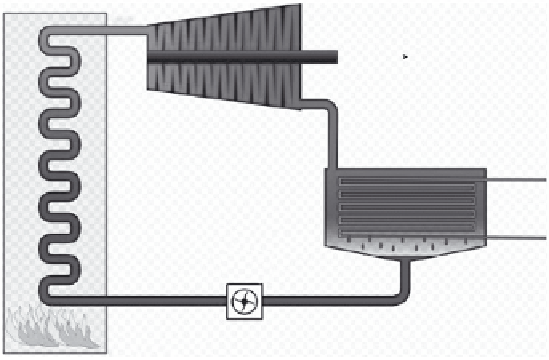Environmental Engineering Reference
In-Depth Information
3. Ability to use low-quality, high-ash content and inferior fuels
4. Reduced environmental impact in terms of air pollution
5. Reduced water requirement
6. Higher reliability and availability
5.1.4 Classification of Power Plant Cycle
Power plant cycles are generally divided into the following classical
groups [1,2]:
1. Vapour power cycle—such as the Carnot cycle, Rankine cycle
(Figure 5.1), regenerative cycle, reheat cycle, binary vapour cycle
2. Gas power cycles—such as the Otto cycle, diesel cycle, dual combus-
tion cycle, gas turbine cycle
5.1.4.1 Rankine Steam Cycle
The Rankine cycle is the most common of all power generation cycles and
is diagrammatically depicted in Figures 5.2 and 5.3. The Rankine cycle was
devised to make use of the characteristics of water as the working fluid.
The cycle begins in a boiler (State 4 in Figure 5.3), where the water is heated
in a constant pressure process until it reaches saturation. Once saturation
is reached, further heat transfer takes place at a constant temperature until
the working fluid reaches a quality of 100% (State 1). At that point, the high
quality vapour is expanded isentropically through an axially bladed turbine
stage to produce shaft work. The steam then exits the turbine (at State 2).
3
W
turbine
4
Q
out
W
pump
2
1
Q
in
FIGURE 5.1
Simple Rankine power cycle.










